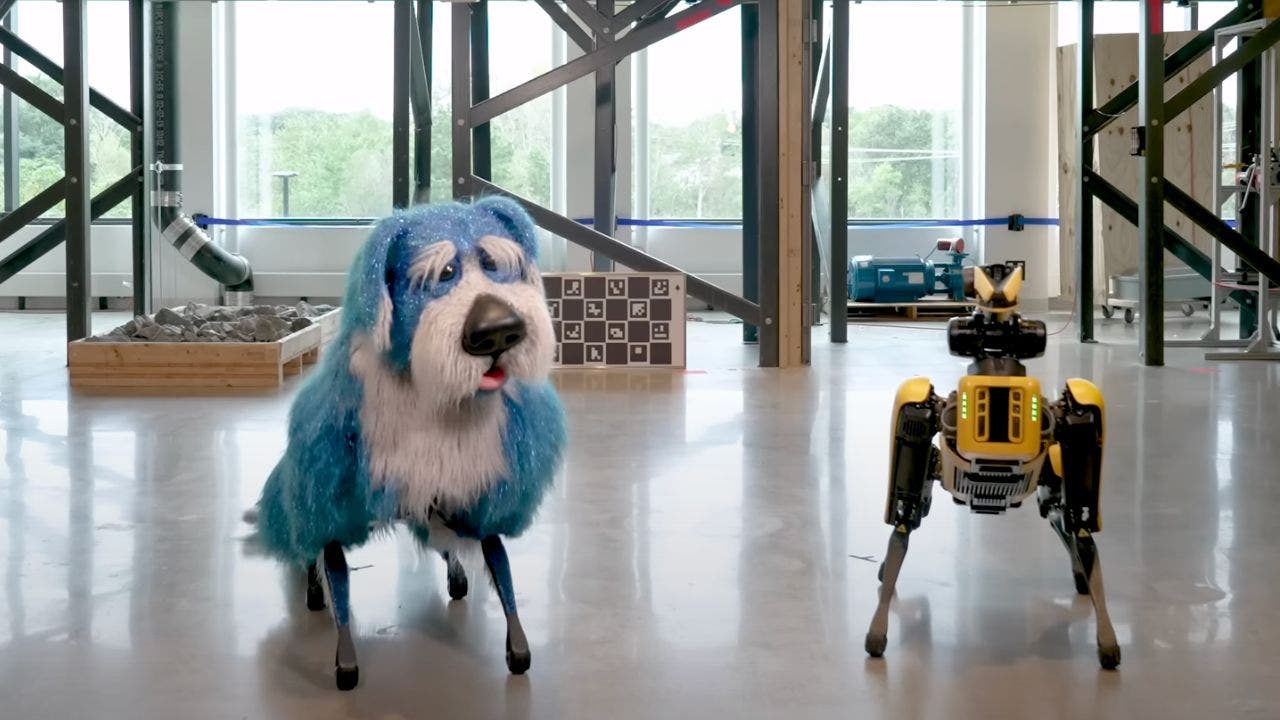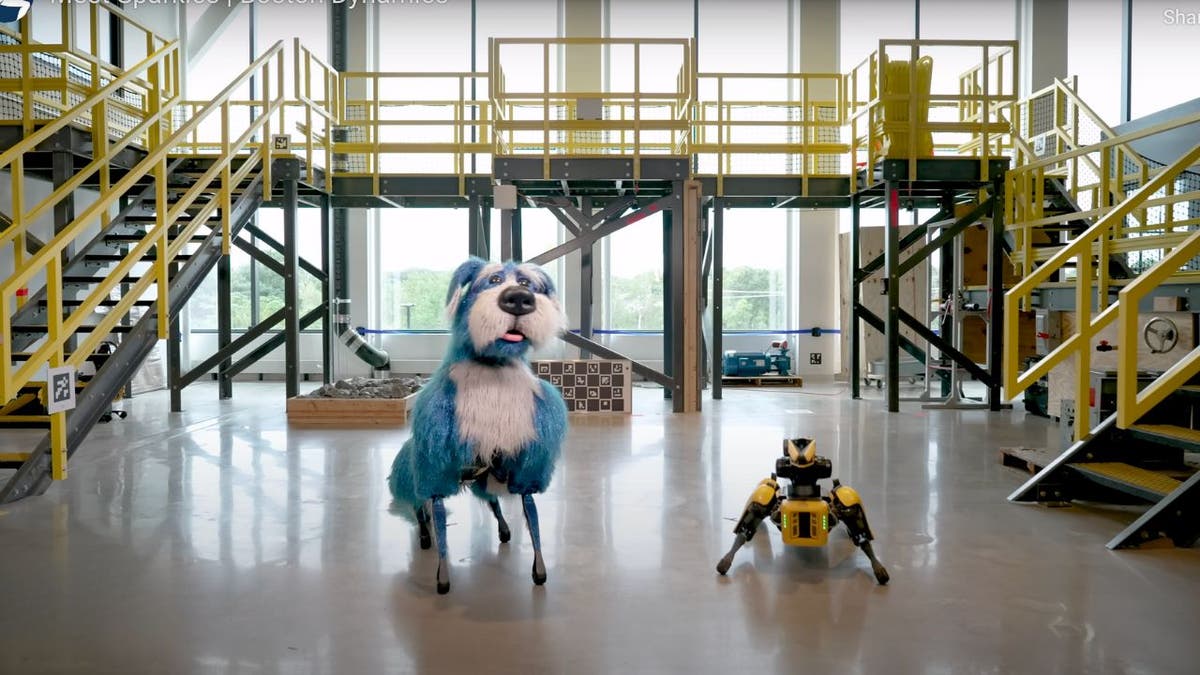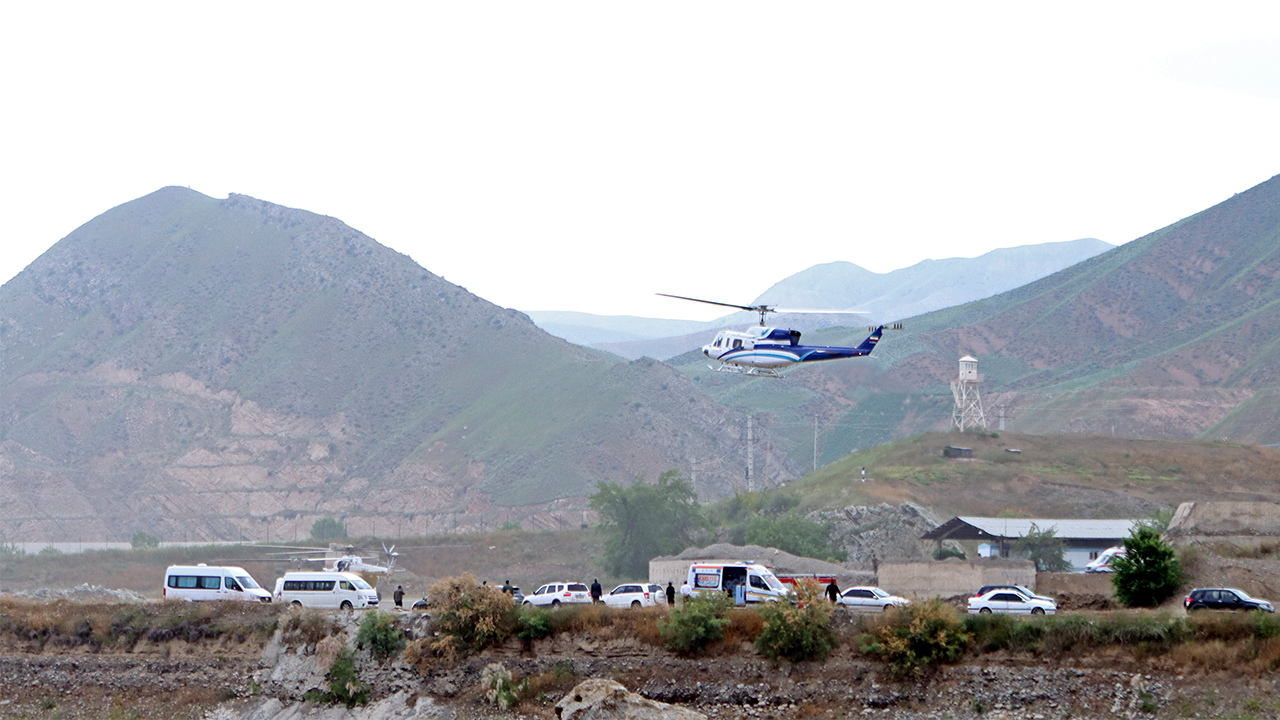Last month, several news outlets reported that Russia could be planning to deploy a space-based nuclear weapon, alarming, well, pretty much everyone.
Technology
Nuclear weapons in space are bad news for the entire planet
/cdn.vox-cdn.com/uploads/chorus_asset/file/25342236/247051_Nukes_in_Space_CVirginia_C.jpg)
US policy hawks, space environmentalists, and anyone with a lingering memory of Cold War-era fears over nuclear annihilation were all sounding the alarm about the threat posed by a Russian nuke in space.
As scary as the prospects sound, the US government has assured people that the weapon doesn’t necessarily pose a threat to people on the ground. Instead, it would target other objects in space, like the satellites used by the US military for communications and other operations.
But that struck some as cold comfort, especially given Russian President Vladimir Putin’s unpredictability. And Putin has indicated that putting a nuclear power unit in space is a priority for the country.
In the long term, defense experts warn that having a nuclear weapon positioned in space could pose a threat to life on Earth by eroding international relations and space law. From clouds of space debris that could cut off access to space to the development of weapons that could launch from space to hit targets on the ground, space-based nukes have the potential to impact everything — and everyone.
Anti-satellite weapons already exist — but not nuclear ones
No country has ever used an anti-satellite weapon against another country, but several countries have destroyed their own satellites in demonstrations of their military capabilities — including the US, Russia, China, and India.
These tests are not without controversy: a 2021 Russian test of an anti-satellite weapon, for example, drew condemnation from NASA for creating debris that threatened astronauts on the International Space Station (including Russian cosmonauts). Since then, a UN panel has called for a ban on the testing of such weapons and several European Union nations and the US have pledged not to perform destructive tests.
A nuclear weapon in space would cause much more destruction than previous anti-satellite weapons tests, explained Andrew Reddie of the Berkeley Risk and Security Lab, as existing space-based weapons typically destroy just one satellite at a time. In the age of huge satellite constellations such as Starlink, knocking out a single satellite is more of an annoyance than a major threat.
To destroy satellites at scale, you need a different weapon, such as a directed energy weapon based on the ground. Or, you could use a nuclear weapon in space, which creates not only shock effects but also heat, radiation, and an electromagnetic pulse — giving it the ability to take out or impair entire networks.
A nuclear weapon in space would cause much more destruction than previous anti-satellite weapons tests
International laws protecting space
The best response the international community has had to date in restricting the stockpiling and use of nuclear weapons is international law. When it comes to space, the key piece of legislation is the Outer Space Treaty of 1967, of which Article IV prohibits placing nuclear weapons or other weapons of mass destruction in orbit.
Detonating a weapon in space would be unprecedented and could run afoul of international rules barring the use of indiscriminate weapons on civilians or civilian objects.
“It seems to be that any kind of destruction of something in space is an indiscriminate weapon, and indiscriminate weapons are prohibited, and the use of indiscriminate weapons are a war crime,” said Christopher Johnson, professor of law at Georgetown University.
However, this assumes that satellites are being destroyed by a kinetic impact. It might be possible to disable or jam satellites in another way, such as using an electromagnetic pulse, or EMP. Some reports have suggested that Russia is developing an EMP anti-satellite weapon rather than a nuclear one. If that could be done in a way that doesn’t create a debris field, that may not contravene the international law because it would no longer be a weapon of mass destruction or indiscriminate in its effects.
With the current situation, “We don’t know what is being threatened,” Johnson said and pointed out that the details matter a lot here and that Russia is capable of a very close reading of the relevant laws to stay within them.
Detonating a weapon in space would be unprecedented and could run afoul of international rules
The cascading debris problem
The reason that the use of weapons in space could be considered indiscriminate is because of the debris field they create. Destruction of objects in space creates large pieces of debris, which are hazardous but relatively easy to track. Where it gets dangerous is the increasing number of medium and small pieces of debris, which are too small to be trackable but are still traveling at high enough speeds to do tremendous damage to other objects or even people in space.
“A fleck of paint the size of your thumbnail can go through most spacecraft. Traveling at a very high velocity — 18,000 mph — it’ll go right through it,” said space debris expert Vishnu Reddy of the University of Arizona.
A serious collision in orbit could create a field of small debris pieces that would quickly collide with other satellites, creating a cascade. At a critical mass, each collision creates more debris, which creates more collisions, which creates more debris, until an entire orbit becomes difficult or impossible to access.
This scenario, known as the Kessler syndrome, could cut off access to space for generations: from making rocket launches more difficult, dangerous, and expensive to, at worst, making any kind of space travel completely impossible for decades and shutting humanity off from the stars.
This concept of the syndrome was first proposed in the late 1970s, when there were optimistic predictions that the Space Shuttle might fly as often as once per week. That never came to fruition, so in the intervening decades, there was less concern about the possibility of a cascading debris event.
But now, with the pace of both government and private launches ramping up to the highest levels ever, space debris is once again on everyone’s radar, Reddy said: “The old fear has come back.”
“A fleck of paint the size of your thumbnail can go through most spacecraft.”
Vulnerable orbits
The most useful orbits around the planet are getting increasingly crowded, and even if humanity stopped launching things into space tomorrow, the debris already in orbit would continue to collide and make the problem worse.
Over the long term, if this problem isn’t addressed, it could spiral into a Kessler syndrome, as the situation can go from bad to catastrophic quickly. “The timeline for the cascading collisional scenario is very short,” Reddy said. “We’re talking anywhere from hours to days to weeks, not months to years to decades.”
The use of a nuclear weapon in orbit, depending on its size and in which orbit it is detonated, could kick off such a cascading scenario. But this isn’t exclusive to nuclear weapons. It’s possible that a bad actor destroying a single, carefully chosen satellite could create a cascade, Reddy said, if they picked a vulnerable target.
In geostationary orbit, for example, there are only so many slots available for satellites in the ring around the Earth’s equator. That makes the slots in high demand, as they are a limited resource. And this scarcity is compounded by the fact that it’s very difficult to remove debris from an orbit so distant, at over 20,000 miles from the Earth’s surface. If these slots are blocked by debris, it could cut off functionality for systems like communications satellites, weather satellites, and navigation satellites.
“That would be really, really bad,” Reddy said. “One satellite explosion big enough would be enough to destroy a lot of assets in geostationary orbit.”
Fears for the future
Although it’s unlikely that any actor would launch a nuclear weapon in space with the specific intention of kicking off a cascading debris effect, it might happen as a consequence of trying to destroy a particular military system. But the debris isn’t the only thing that has experts worried.
Security risk expert Andrew Reddie questioned what it would take to convert the technology for a nuclear anti-satellite weapon into a platform that could deploy nuclear weapons from space to targets on the ground. This would require a reentry vehicle, for example, which doesn’t exist yet but could theoretically be constructed based on existing technology. Nukes launched from space would give less warning time than those launched from the surface, threatening thousands or even millions of people.
It’s not that the deployment of nukes in space is necessarily likely, with no current indication that Russia is developing such a weapon. But it does show how nuclear weapons in space could shift the geopolitical landscape dramatically and why reports of potential space-based nuclear weapons have drawn such condemnation.
“The old fear has come back.”
A matter of global governance
Russian President Vladimir Putin has denied any plans to develop a nuclear anti-satellite weapon and has said that Russia is against the deployment of nuclear weapons in space. And experts agree that Russia takes pride both in its space program and in its role in international governance as a permanent member of the United Nations, though the invasion of Ukraine has shaken the country’s international status and resulted in the suspension of joint space missions with other space agencies.
For the Russians to develop or deploy such an anti-satellite weapon “would undermine their diplomatic efforts,” Johnson said. Russia has a global leadership role in space governance and was a key negotiator in the Outer Space Treaty, and going against that would be self-undermining. “They take their role seriously,” Johnson said.
There is also international pressure from beyond the US and Europe. Even China, which has a space program that is notably separate from other nation’s space programs and does not participate in international projects like the International Space Station, has emphasized that it is against the proliferation of weapons in space. US government representatives are trying to recruit China and India in discouraging Russia from pursuing nuclear anti-satellite technology.
Deploying a weapon in space would be against Russia’s own self-interest, experts argue. Spreading a debris field across an entire orbit limits the ability of everyone to access space, including those who fired the weapon.
However, those effects are not necessarily symmetrical. “The Americans rely on space far more than both Russia and China, so in most domains, if you were to degrade it for everybody, that would be a problem,” Reddie said. “But if you’re degrading space, it’s going to asymmetrically affect the Americans. And the Russians know that.”
This raises the question of what the global consequences might be if — or when — any nation chooses to use a space-based weapon and whether the existing international legal structure could respond to that.
Space debris expert Reddy compared firing such a weapon to flipping a chess board when you’re losing a game: “It’s no longer about winning. It’s ‘I’m losing, so nobody wins.’”

Technology
The Mac Pro and Studio won’t get the M4 nod until mid-2025
/cdn.vox-cdn.com/uploads/chorus_asset/file/24748328/236706_Mac_Pro_AKrales_0094.jpg)
Throughout 2024, though, all of Apple’s laptops (except the MacBook Air) will move to the M4 chip that the company just gave the iPad Pro, Gurman writes. Amusingly, this herky-jerky chip upgrade cycle means that the iPad Pro is currently the single-core performance champ of Apple’s lineup — and it will continue to be for about another year, when compared to the Mac Studio and Mac Pro.
This is a silly comparison, of course — The current crop of Mac Studios and Mac Pros are incredible computers that hold more RAM, have more ports, and won’t throttle as quickly as the iPad Pro, even with that heat-conducting Apple logo. They also don’t have an operating system that stands squarely in the way of pushing their hardware. And high-end Mac users should be used to waiting a while between revisions. Still, I’m sure more than a few people will appreciate the upgrade when it comes.
Technology
Boston Dynamics' creepy robotic canine dances in sparkly blue costume

As the world celebrated #InternationalDanceDay, a unique duo took the stage, or rather, the screen, to showcase a different kind of choreography.
Spot, the quadruped robot developed by Boston Dynamics, found a new friend in Sparkles, a dazzlingly dressed counterpart designed to explore the fusion of robotics, art and entertainment.
Sparkles and spot canine robots dance (Boston Dynamics)
A cartoon come to life
At first glance, the video in question seems like a whimsical animation straight out of a children’s show. Yet, this is no fiction. The footage is a testament to how far robotics has come, featuring Spot adorned in a blue, sparkly, albeit slightly creepy costume, performing a dance routine that could rival any animated character.

Sparkles and spot canine robots dance (Boston Dynamics)
GET SECURITY ALERTS, EXPERT TIPS – SIGN UP FOR KURT’S NEWSLETTER – THE CYBERGUY REPORT HERE
Meet Sparkles
“Spot is meeting another strange dog and making friends through the power of dance. Meet Sparkles!” Boston Dynamics announced. The video features two Spots — one in the recognizable black and yellow, and the other, Sparkles, in the blue, sparkly dog costume — engaging in a robotic dance-off that culminates in a mechanical kiss.
ASK ANY TECH QUESTION, AND GET KURT’S FREE CYBERGUY REPORT NEWSLETTER HERE

Sparkles and spot canine robots kiss (Boston Dynamics)
This display of robotic affection and agility has sparked conversations about the potential applications of such technology in entertainment venues like theme parks, where robots could add a layer of realism to character interactions.
Social media’s mixed moves
The reception on social media was as varied as the dance moves displayed. Some viewers were enchanted, praising the mobility and innovation, while others expressed discomfort, humorously suggesting that the cute facade could well be the stuff of nightmares.
CLICK TO GET KURT’S FREE NEWSLETTER, THE CYBERGUY REPORT

Sparkles and spot canine robots dance (Boston Dynamics)
HUMANOID ROBOTS ARE NOW DOING THE WORK OF HUMANS IN A SPANX WAREHOUSE
Kurt’s key takeaways
After watching Spot and Sparkles bust a move together, it’s pretty wild to think about where robotics is heading. It’s like we’re watching a live-action cartoon, isn’t it? These robots are not just showing off some fancy footwork; they’re opening our eyes to a whole new world of possibilities. Whether they’re making us smile or giving us the heebie-jeebies, they’re proof that creativity knows no limits.
How do you feel about robots displaying human-like behaviors such as dancing and kissing? Does it concern you for the future of human-robot interactions? Let us know by writing us at Cyberguy.com/Contact
For more of my tech tips and security alerts, subscribe to my free CyberGuy Report Newsletter by heading to Cyberguy.com/Newsletter
Ask Kurt a question or let us know what stories you’d like us to cover
Follow Kurt on Facebook, YouTube and Instagram
Answers to the most asked CyberGuy questions:
Copyright 2024 CyberGuy.com. All rights reserved.
Technology
The smells and tastes of a great video game
/cdn.vox-cdn.com/uploads/chorus_asset/file/25430225/247065_Vergecast_Gaming_Senses_Smell_SHaddad.png)
As video games and movies become more immersive, it may start to become apparent what sensations are missing in the experience. Is there a point in Gran Turismo that you wish you could smell the burning rubber and engine exhaust? Would an experience playing beer pong in Horizon Worlds not be complete unless you could taste the hops?
On this episode of The Vergecast, the latest in our miniseries about the five senses of video games, we’re tackling the topics of smell and taste in video games — and whether either could actually enhance the virtual experience for gamers. In other words: Smellovision is back for a new generation of media.
First, we try out a product (actually available to buy today) called the GameScent, an AI-powered scent machine that syncs with your gaming and movie-watching experience. The GameScent works by listening in on the sound design of the content you’re playing or watching and deploying GameScent-approved fragrances that accompany those sounds. We tried the GameScent with games like Mario Kart and Animal Crossing to see if this is really hinting at a scent-infused gaming future.
On the taste side, we speak to Nimesha Ranasinghe, an assistant professor at the University of Maine working on taste sensations and taste simulation in virtual reality experiences. Ranasinghe walks us through his research on sending electrical pulses to your tongue to manipulate different taste sensations like salty, sweet, sour, and bitter. He also talks about how his research led to experimental gadgets like a “virtual cocktail,” which would allow you to send curated tasting and drinking experiences through digital signals.
If you want to know more about the world of smelling and tasting digital content, here are some links to get you started:
-

 News1 week ago
News1 week agoSkeletal remains found almost 40 years ago identified as woman who disappeared in 1968
-

 World1 week ago
World1 week agoIndia Lok Sabha election 2024 Phase 4: Who votes and what’s at stake?
-

 Politics1 week ago
Politics1 week agoTales from the trail: The blue states Trump eyes to turn red in November
-

 World1 week ago
World1 week agoBorrell: Spain, Ireland and others could recognise Palestine on 21 May
-

 World1 week ago
World1 week agoCatalans vote in crucial regional election for the separatist movement
-

 Politics1 week ago
Politics1 week agoNorth Dakota gov, former presidential candidate Doug Burgum front and center at Trump New Jersey rally
-

 Movie Reviews1 week ago
Movie Reviews1 week ago“Kingdom of the Planet of the Apes”: Disney's New Kingdom is Far From Magical (Movie Review)
-

 World1 week ago
World1 week agoUkraine’s military chief admits ‘difficult situation’ in Kharkiv region













